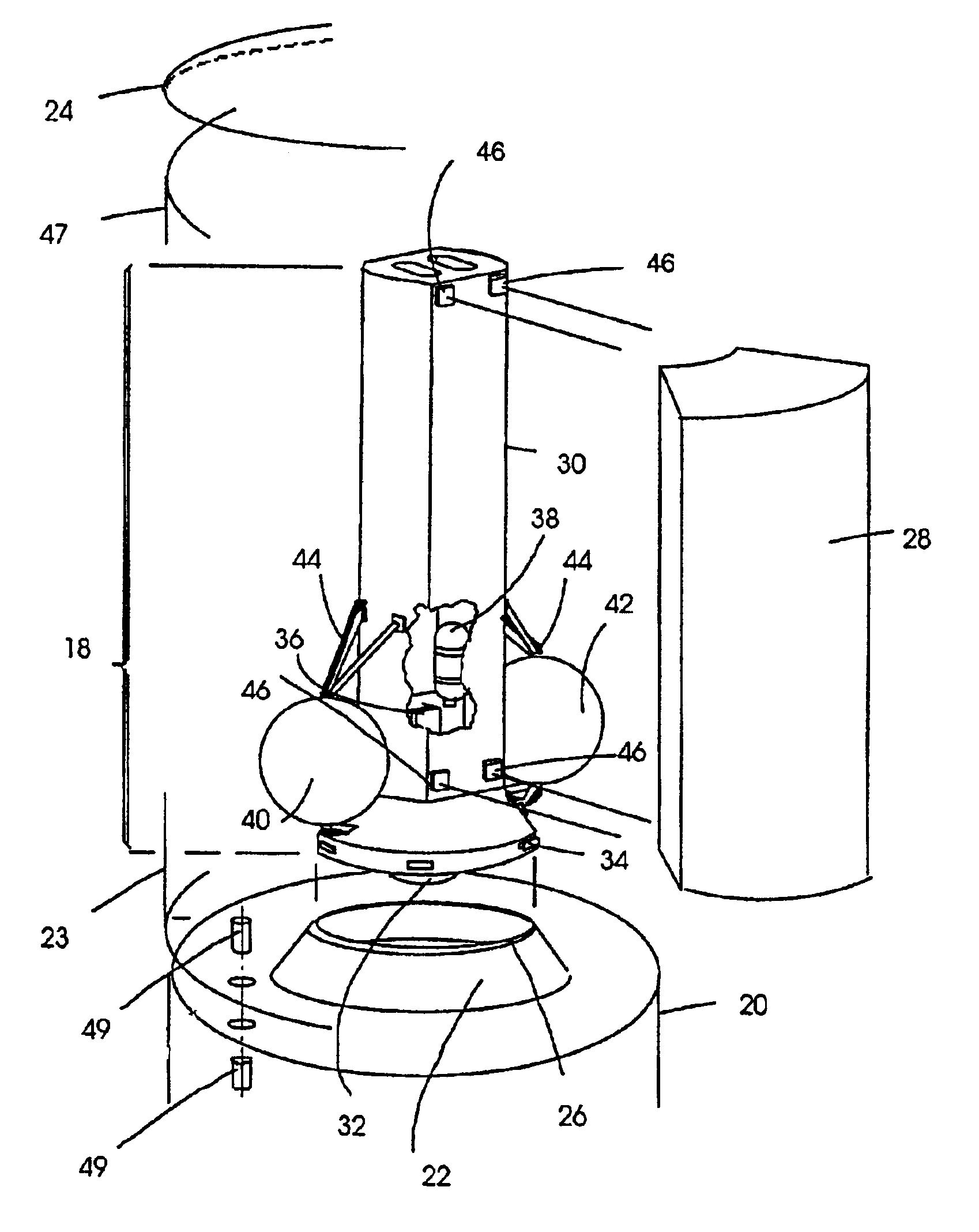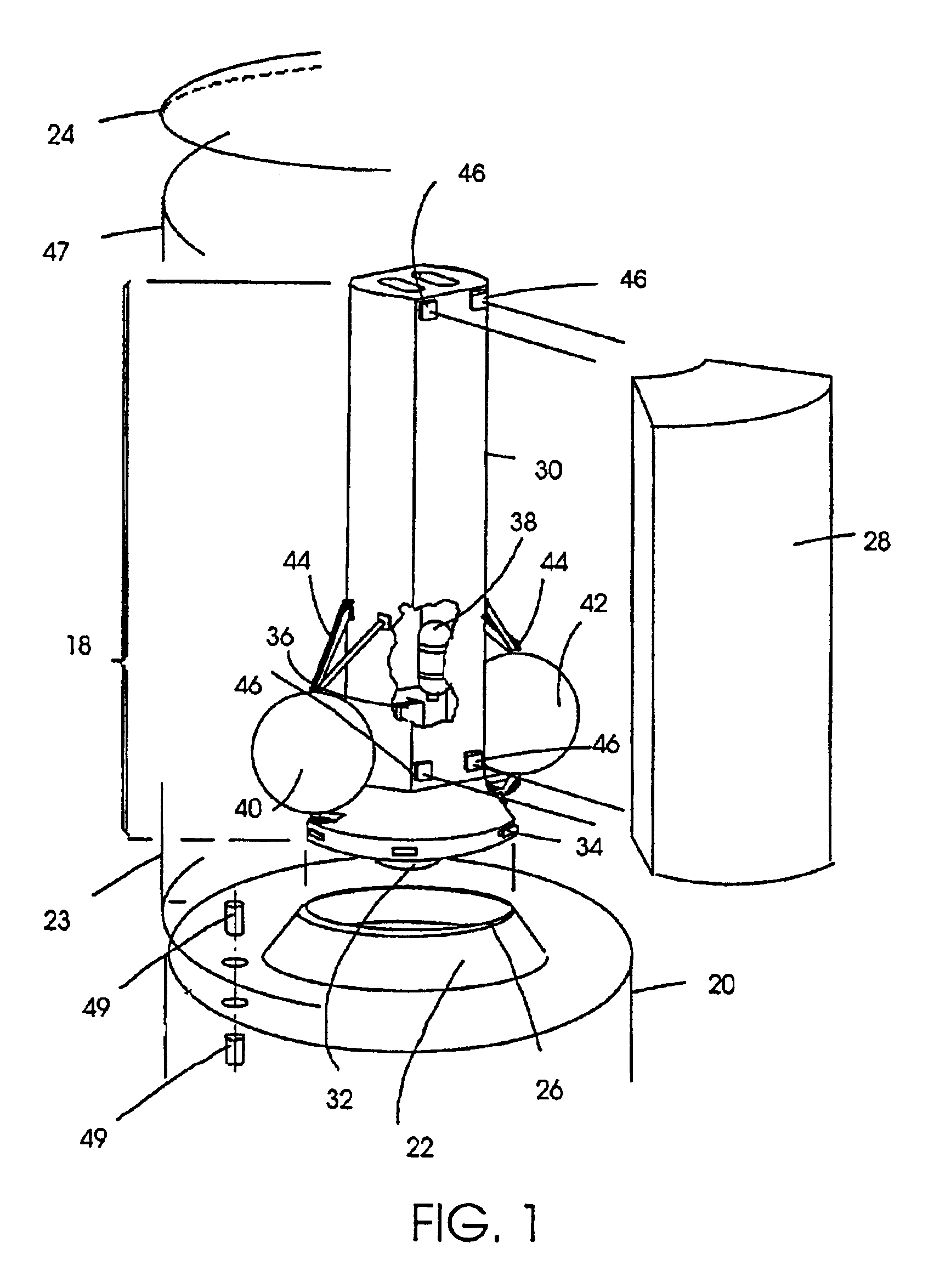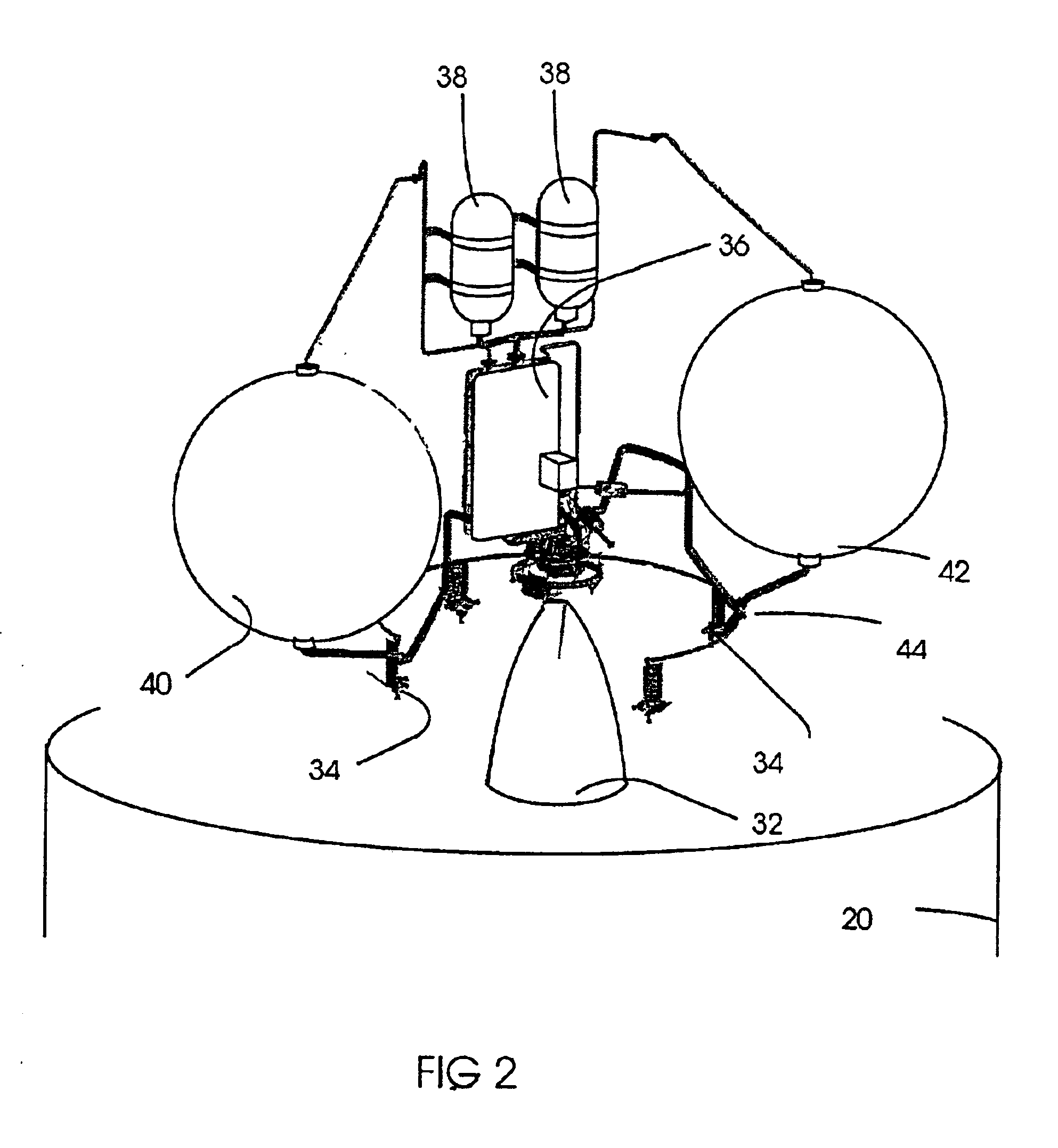Active satellite dispenser for reusable launch vehicle
a satellite dispenser and reusable technology, applied in the field of satellite dispensers, can solve the problems of high cost, high cost, high cost partly attributable to the aggregation of multiples, and existing satellite dispensers lack the flexibility and cost effectiveness of reusable vehicles, and achieve the effects of cost-effective, cost-effective, and increased energy efficiency
- Summary
- Abstract
- Description
- Claims
- Application Information
AI Technical Summary
Benefits of technology
Problems solved by technology
Method used
Image
Examples
Embodiment Construction
The active dispenser relates to enhance existing and emerging reusable launch vehicle (RLV) technology and its use in the satellite transportation industry. The present invention provides a more cost-effective transportation cycle capable of placing cargo into orbits beyond the capability of typical existing RLVs or expendable launch vehicle.
Reference is now made to FIG. 1, which illustrates a preferred embodiment of the invention. FIG. 1 is a side view of an active satellite dispenser 18 for transporting satellites, payloads, or cargo to space. A launch vehicle--for example the K-1 reusable launch vehicle 20--is attached at the bottom of the active dispenser 18. It is contemplated that the launch vehicle may be a single-stage rocket vehicle, a two-stage launch vehicle, or multi-stage space vehicle, and may be either expendable after launch or reusable on future launches. A conical payload adapter 22 is used to attach the active dispenser 18 to the K-1 orbital vehicle 20. A clampban...
PUM
 Login to View More
Login to View More Abstract
Description
Claims
Application Information
 Login to View More
Login to View More - R&D
- Intellectual Property
- Life Sciences
- Materials
- Tech Scout
- Unparalleled Data Quality
- Higher Quality Content
- 60% Fewer Hallucinations
Browse by: Latest US Patents, China's latest patents, Technical Efficacy Thesaurus, Application Domain, Technology Topic, Popular Technical Reports.
© 2025 PatSnap. All rights reserved.Legal|Privacy policy|Modern Slavery Act Transparency Statement|Sitemap|About US| Contact US: help@patsnap.com



